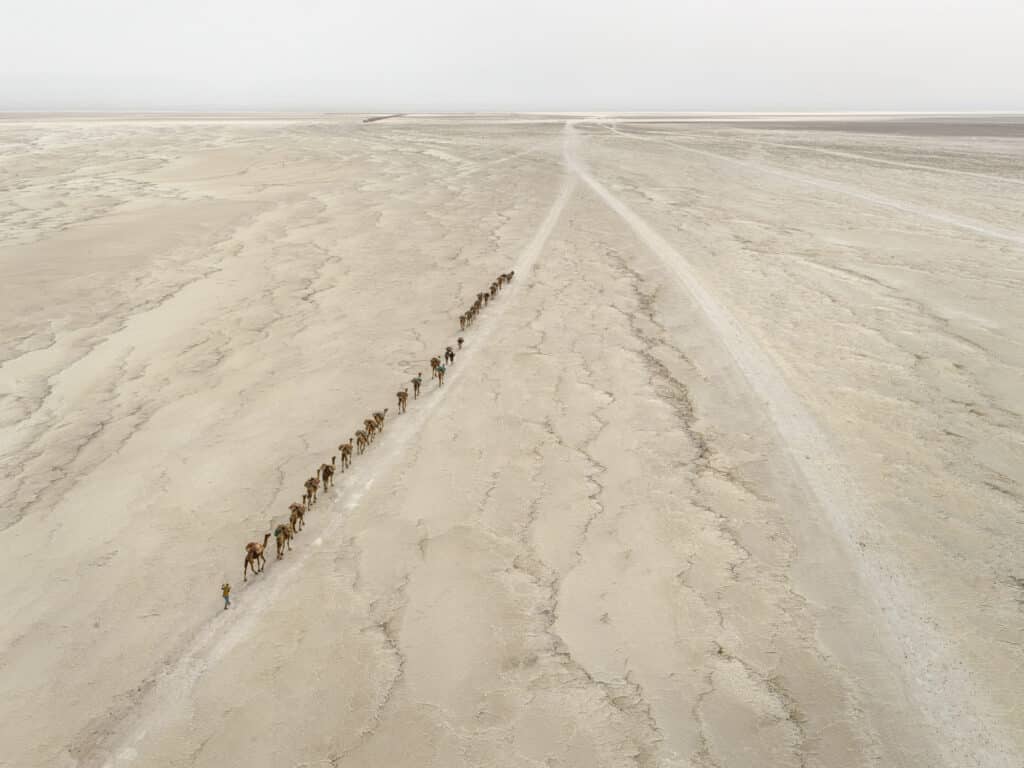At first glance, Edward Burtynsky’s “African Studies” exhibition at the Howard Greenberg Gallery is a majestic geometry of colors and shapes, all with roots in art history.
The salt ponds of Senegal have traces of Gustav Klimt, sewn together mosaic-like near the towns of Tikat Banguel and Fatick. A view from above the Grand Ethiopian Renaissance Dam recalls M.C. Escher’s famed staircases. In the coal tailings of South Africa, the plume of an Erte ensemble and the distressed rivulets of a Jackson Pollock. But a closer look, a closer read, reveals the startling nature of what Burtynsky calls “business as usual.”
“African Studies” is currently on view in two New York galleries: at Howard Greenberg until April 22 and at the Sundaram Tagore Gallery until April 1. It was also released as a monograph by Steidl at the end of last year. It is a continuation of Burtynsky’s travels across the globe, capturing modern landscapes both touched and untouched by human hands, some more virulently than others.
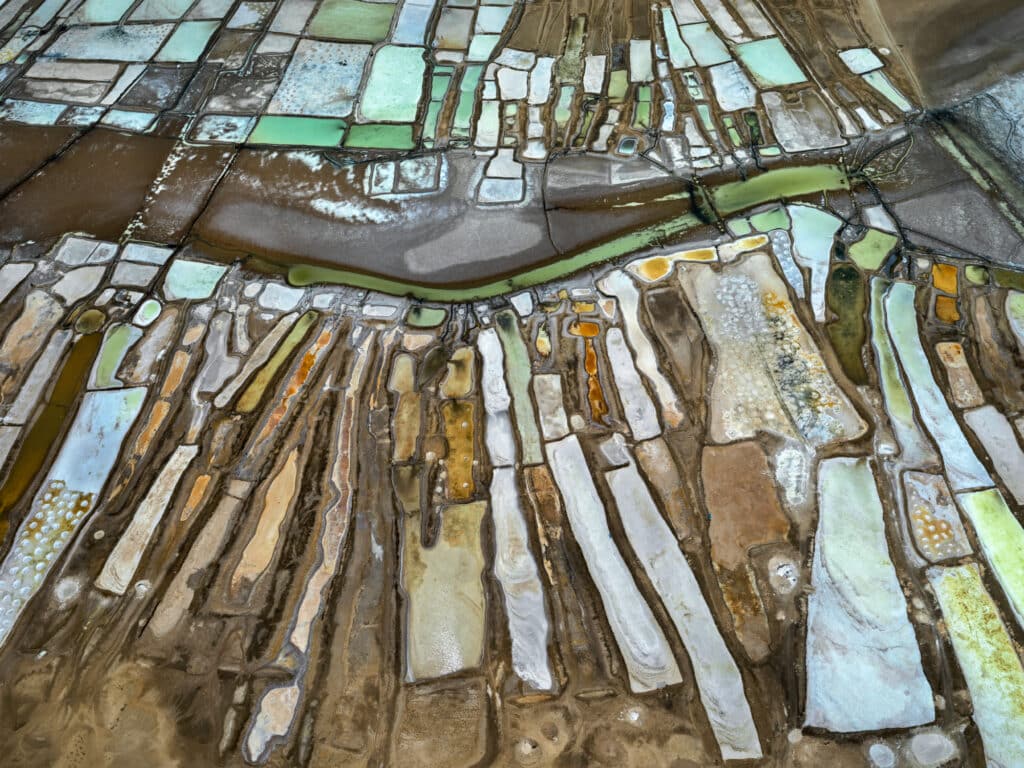
A population of 8 billion
While the severity of human interaction with the natural world is by no means lost on him, he says it’s not his primary focus when making images. “People often say I photograph disasters or devastation, and I kind of have to stand back and say, ‘well, let’s look at this’ and say, ‘is that the right terminology to use?’” he says.
“Almost everything that I’ve photographed in my career is not about devastation, it’s about business as usual. These are all places that [have] acquired permits and licensing to do the things that they’re doing, whether it’s cutting down those trees, or removing the iron ore, or the copper from the ground, or diverting that river with a dam…things that are human enterprises in pursuit of being able to create a world that can sustain a population of 8 billion and growing.”
Many salt ponds in Fatick are human-made. With these and other natural salt ponds and lakes across the country, Senegal produces nearly 500,000 tons of salt every year, making it the region’s largest producer of salt. One third of that salt comes from Fatick. But according to an article in Land Use Policy, the seeping of salt into soil, called soil salinity, is “one of the most severe environmental problems in the coastal agricultural areas in Senegal.” This can be worsened by climate change and lack of rainfall as well as improper land management and leads to a reduction in both crops and earning potential for local farmers.
The Grand Ethiopian Renaissance Dam, or GERD, began construction in Ethiopia on the Nile River in 2011. Primarily meant “to produce electricity in order to relieve Ethiopia’s acute energy shortage and for electricity export to neighboring countries,” Burtynsky shares in African Studies, the dam has been a great source of political turmoil for Ethiopia and nearby Egypt and Sudan.
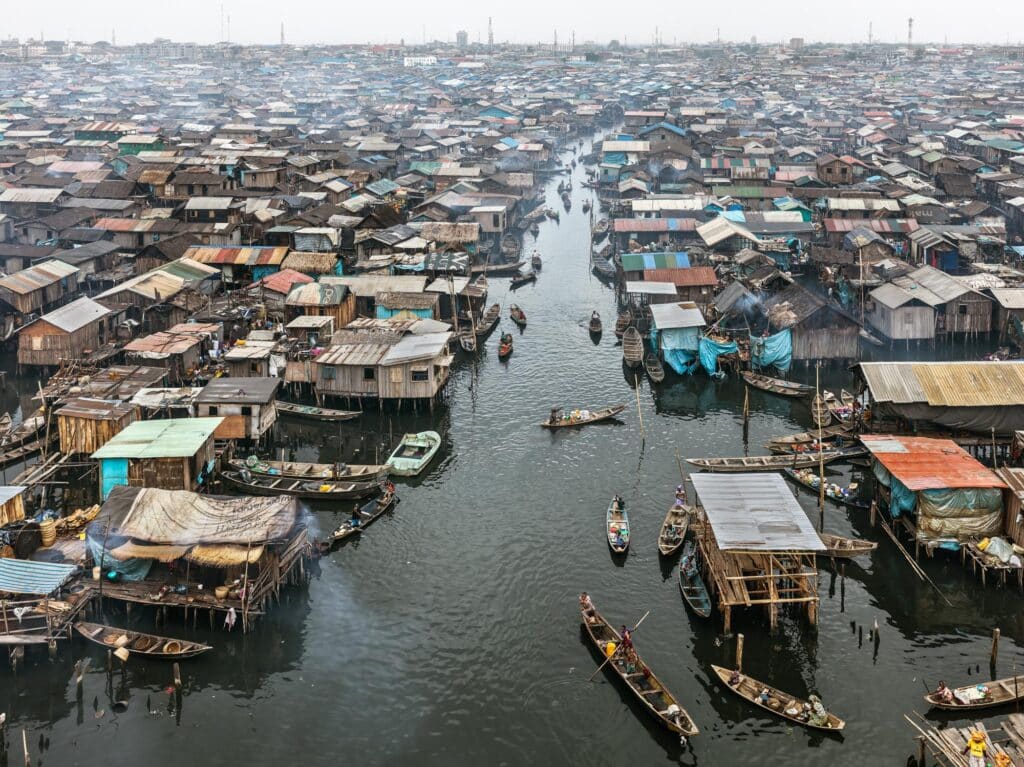
It’s a conflict that’s since been documented by the Carnegie Endowment for Peace. “Cairo has asserted that the project poses a threat to Egyptian and regional stability, and specifically to Egyptian water security,” the endowment wrote. “Conversely, Ethiopia maintains that the GERD is a development project rather than a security-based political project,” and a tool in the fight against poverty. The conflict is still underway.
Coal tailings are waste produced after coal is mined. According to the Society for Mining, Metallurgy, and Exploration, tailings develop “after ore containing an economically-recoverable commodity is mined from the earth…extracted in a processing plant or mill.” Coal tailings are often emptied into what’s known as a tailing dam, a manmade yet earthen structure where waste is stored as a liquid. If a dam collapses or if the tailings are not disposed of properly, the toxic waste seeps into the land and into the community. A 2022 study in Minerals found that of all the coal mined in South Africa, 30 to 40% of it becomes waste that, in the long term, can have adverse effects on the environment.
According to Reuters, “more than a third of the world’s tailings dams are at high risk of causing catastrophic damage to nearby communities if they crumble,” and “South Africa has the largest number of tailings dams built using an architectural method considered unsafe by many engineers.”
The state of the environment
So here they are, these images whose backstories are as challenging as they are beautiful. For Burtynsky, their purpose is both aesthetic and conservant. He hopes the work is visually engaging enough to draw viewers in, stimulating enough to stand in front of and ask questions about what it is, how it came to be, and what these factors mean for the state of the environment he’s documenting.
All the while, he aims to carry through the artistic language he has created for himself as a photographer. Indeed, the beauty of his work generates a state of wonder that pulls the viewer in and has the potential to open their minds and inspire them to help, make change, or both.
“I think of it, rather than devastation, as extended habitats that we just ignore, because why bother? Why should we look at it? Why would we go and look at an open pit copper mine, even though…we’re speaking on a phone right now and I bet you there’s a lot of copper between me and you that’s allowing us to speak?”, Burtynsky says.
“Electric cars? Well, that’s all copper windings and rare minerals and batteries from lithium and cobalt. And so all these things are consequential. There’s a place in the world that this stuff comes from. And I’ve simply gone to those places and made photographs that come back and say, look, to have our lives, we need these places, too, but we don’t talk about them.”
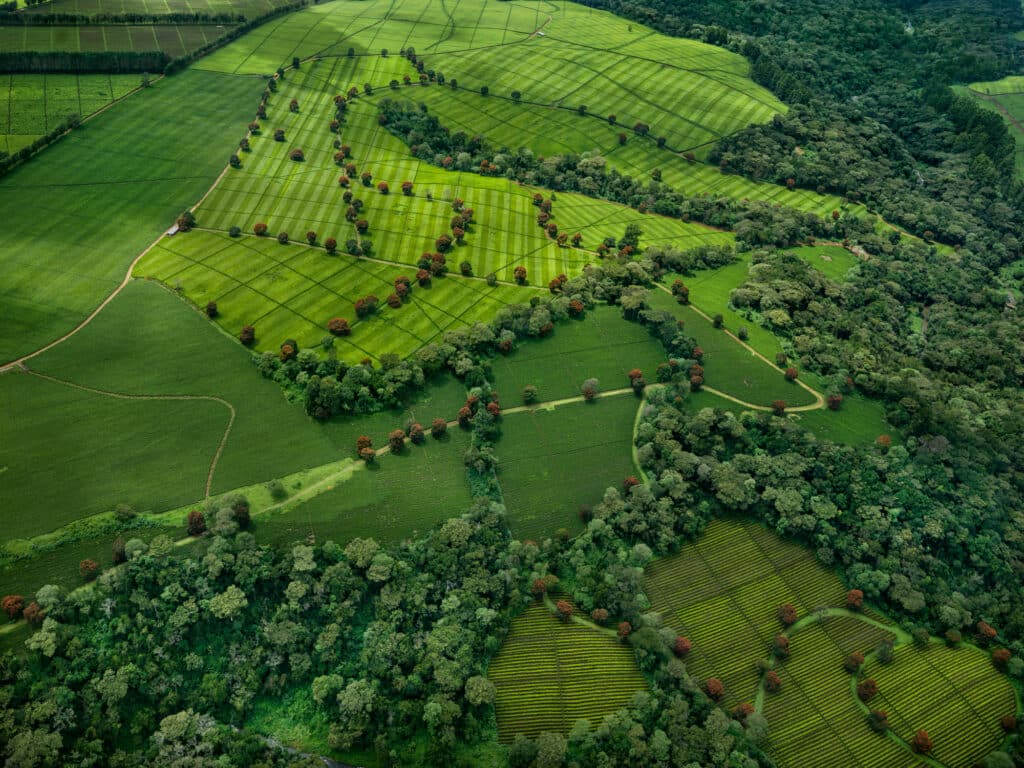
China’s presence in Africa
Burtynsky believes Africa is the next, maybe the last, frontier when it comes to further global industrialization. When working on his China project in the early 2000s, which covered the country’s rapid economic and industrial development, Burtynsky learned China was slowly but surely embedding itself on the African continent, “procuring these massive contracts to build trade rails and roads and industry and factories and cities and apartments.”
He began photographing in Africa in 2015 and after visiting ten countries in Sub-Saharan Africa — South Africa, Botswana, Madagascar, Kenya, Ethiopia, Ghana, Nigeria, Senegal, Namibia, and Tanzania — he completed his image-making for the project in 2020.
As Johns Hopkins professor and political scientist Deborah Bräutigam writes in African Studies, China’s entry into Africa is mirrored in the way Japan first entered China back in the 1970s. At the time, China was struggling financially, but dense with resources. Japan offered the country a $10 billion line of credit so China could rebuild. “China’s leaders saw this as something that was useful for China’s development, and Japan was pleased to get access to China’s oil and sell them technology and services,” Bräutigam shares.
The similarities of the deal have now been duplicated in China’s presence in Africa. “Leverage what you have, and if what you have is natural resources we’re interested,” Bräutigam continues. “Oil in the Congo, sesame in Ethiopia, cocoa in Ghana; use these to build the telecoms, power stations, railways and roads that you believe to be necessary for your country’s development.” Burtynsky also noticed a significant lack of Western presence in Africa.
Indeed, a portion of Burtynsky’s African Studies monograph includes a section on the Chinese industrial presence in Africa, though these images were not on view at the aforementioned galleries. In the book, they serve a documentary function, chronicling the industrial parks, factories, highway development, quarries, and more that have sprung up in places like Ethiopia, Senegal, and Namibia.
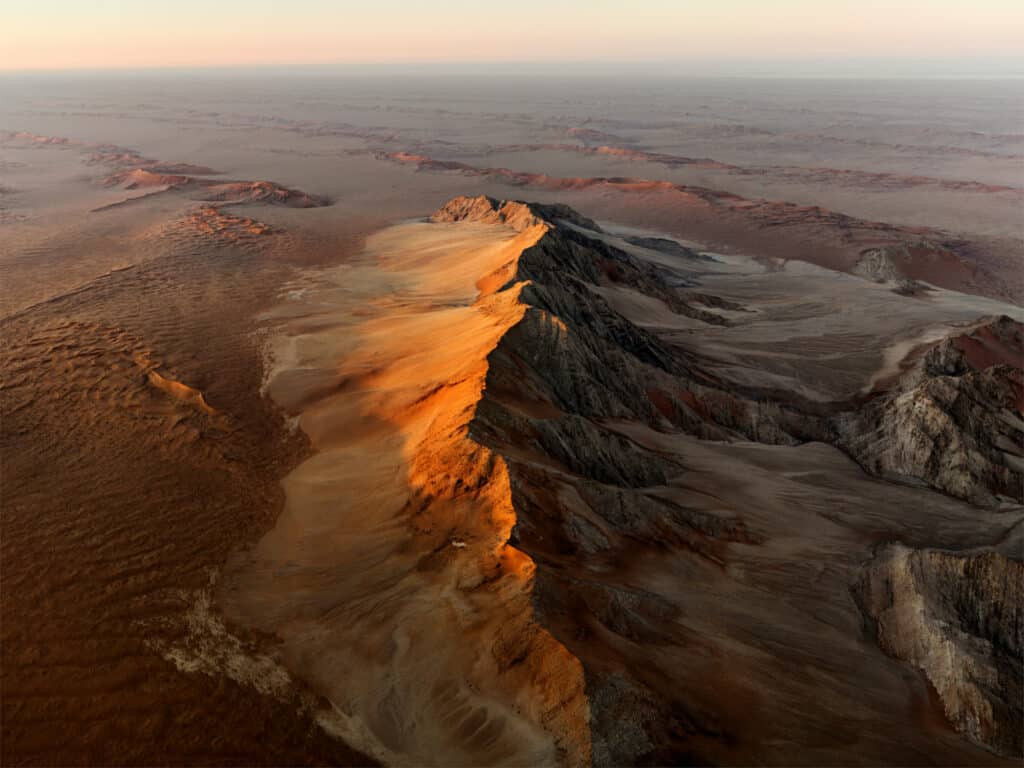
Women in brightly colored garments sit at sewing machines. Spools of ocean-blue thread line the walls. An expressway emerges atop a flat Ethiopian roadway. Banners in Chinese reciting pledges of kindness and respect line factory ceilings. “China is now a powerful force in Africa, and the Chinese are not going away. Their embrace of the continent is strategic, planned, long-term, and still unfolding,” Bräutigam writes. “Ultimately, it is up to African governments to shape this encounter in ways that will benefit their people.”
Burtynsky expects that some of Africa’s 54 countries will soon become economic powerhouses. Additionally, experts anticipate the population of the African continent will double in about 25 years. ”That would be 2.5bn people, meaning more than a quarter of the world’s people would be in Africa,” according to The Economist.
As with China, Burtynsky believes the continent as a whole will be “another one to watch. It’s gonna have very, very significant consequences in terms of population, growth, and need for resources, and a lot of African resources that have been literally protected by the fact that there hasn’t been good infrastructure to get the resources out of there.” Western nations will have to take notice in ways they haven’t yet.
It was also Burtynsky’s goal to make sure the work did not present a stereotype of Africa as a backwater continent, the way it’s wrongly and too often been presented en masse in Western media. He sees the project as “pulling the curtain back, [showing] that Africa is not a backward dark continent where bad things happen. It’s a continent [where] humans are working away to try and make a better life for themselves, like anywhere else in the world,” he says.
“You know, I’m not trying to do the classic giraffe or elephant picture, or whatever…I’m just applying what I did in how I approached China or how I approached Europe or how I approached the United States or Canada; to photograph it, I just approached Africa [as] ‘this is a landscape that humans inhabit.’”
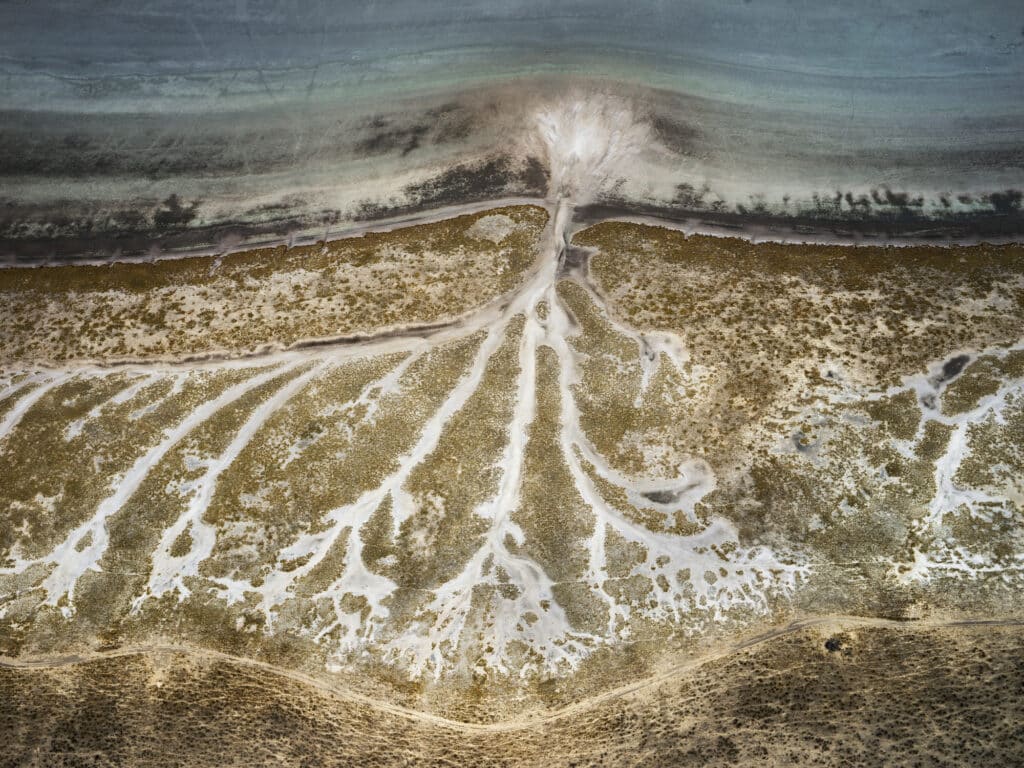
“There are no future guarantees”
What’s interesting about this idea, though, is that in many of Burtynsky’s images there’s a distinct absence of humans, which is especially noteworthy in the images of landscapes we learn later are facing grave environmental damage because of human presence. It’s almost Hitchcockian in nature. I think and write often about the famed director’s quote, “There is no terror in the bang, only in the anticipation of it,” the idea that whatever happens in the imagination is far more powerful than anything one could show on screen.
In Burtynsky’s images we have these visually entrancing mechanisms – fluffy orbs of pastel colors created by an iron ore mine in South Africa, the otherworldly neon fractals bursting forth from sulfur springs – that pull us in and beg us to wonder how and why they got that way, a sinister force looming in the beauty. Because we can rarely see humans in these instances, we can only imagine what humans have done to these landscapes for them to look as they do.
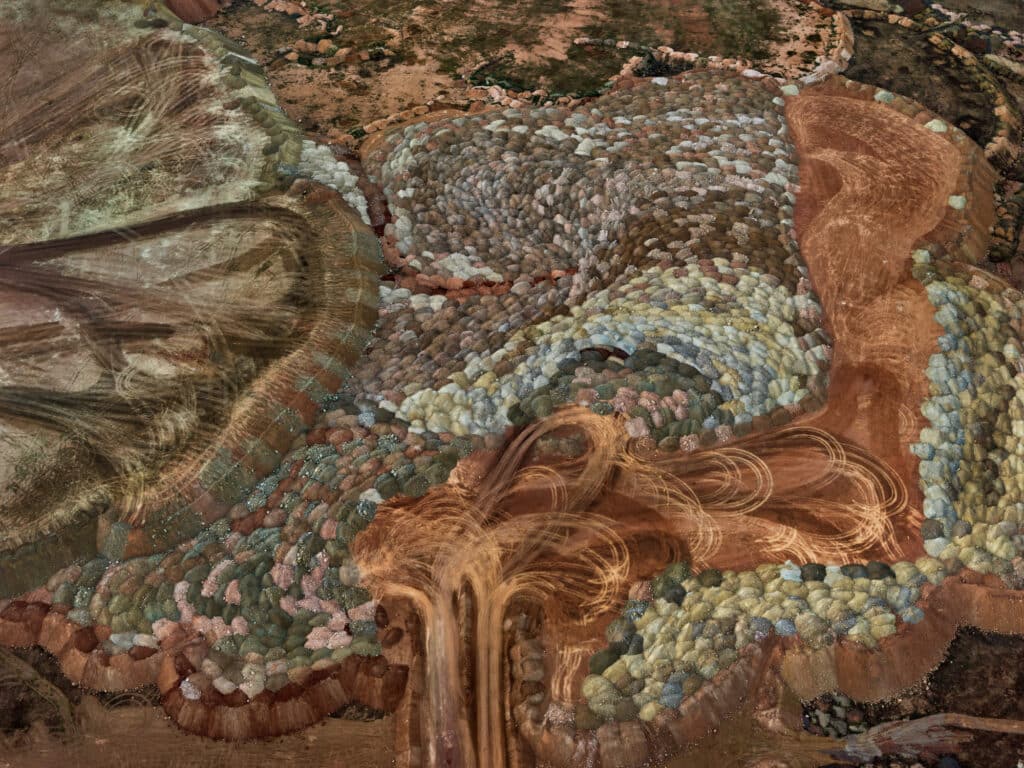
“When you look at it, you know that thousands, hundreds of thousands of people have been involved in making the landscape photograph, but they’re not there. But their work, the results of their work, is there,” Burtynsky says. “The point of view is a lament, in a way, for the loss of nature and the advocacy for nature. And even though I’m a human, and I’m part of the problem, my empathy is with the biodiverse natural world that’s disappearing.”
In a time when environmental awareness colors our outlooks arguably more than it ever has before, Burtynsky’s work continues to remind us that we can’t let that awareness stop, that we must remain vigilant, careful, and respectful of our impact on nature.
The consequences if we don’t are dire, as documented not just in African Studies, but in the work Burtynsky’s made throughout his career. “It’s a very difficult moment and I understand the anxiety of our times… where we’re saying to ourselves, we can actually mess this whole planet up, and it’s our fault,” Burtynsky says. “We don’t even know, as a species, if we’re entitled to have this planet forever…there are no future guarantees.”
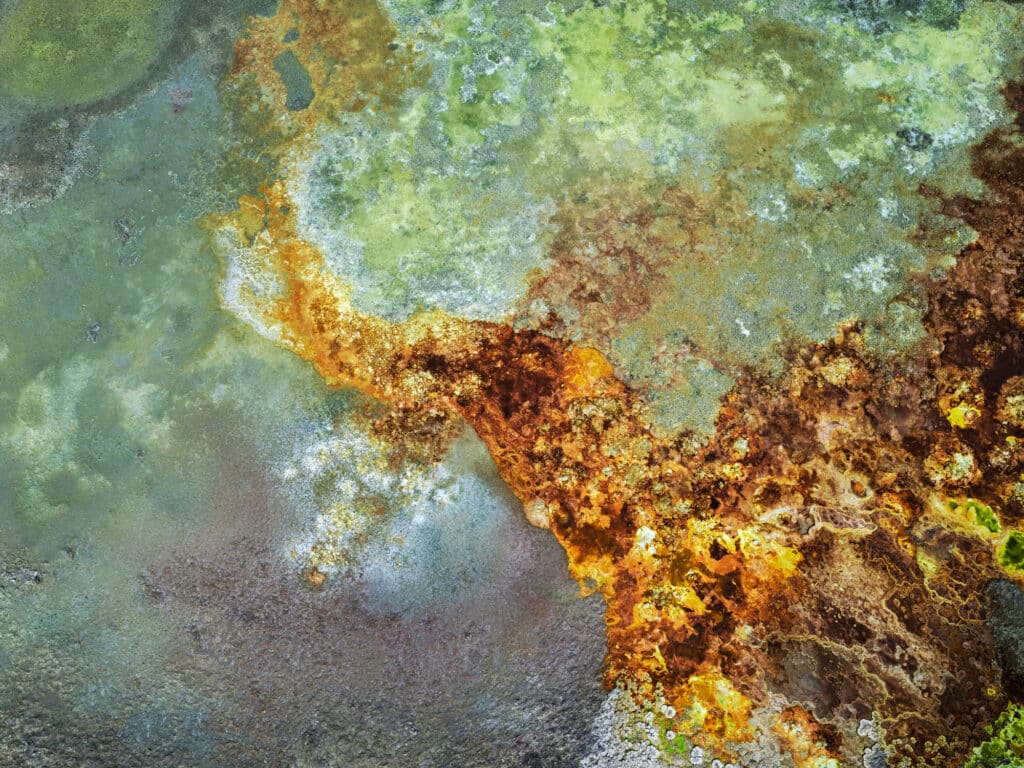
Edward Burtynsky, “African Studies.” On view at: Howard Greenberg Gallery, in New York, until April 20, 2023. Robert Koch Gallery, in San Francisco, until March 30th, 2023. Sundaram Tagore Gallery, in New York, until April 1st, 2023. The book is published by Steidl and available for 95€.
